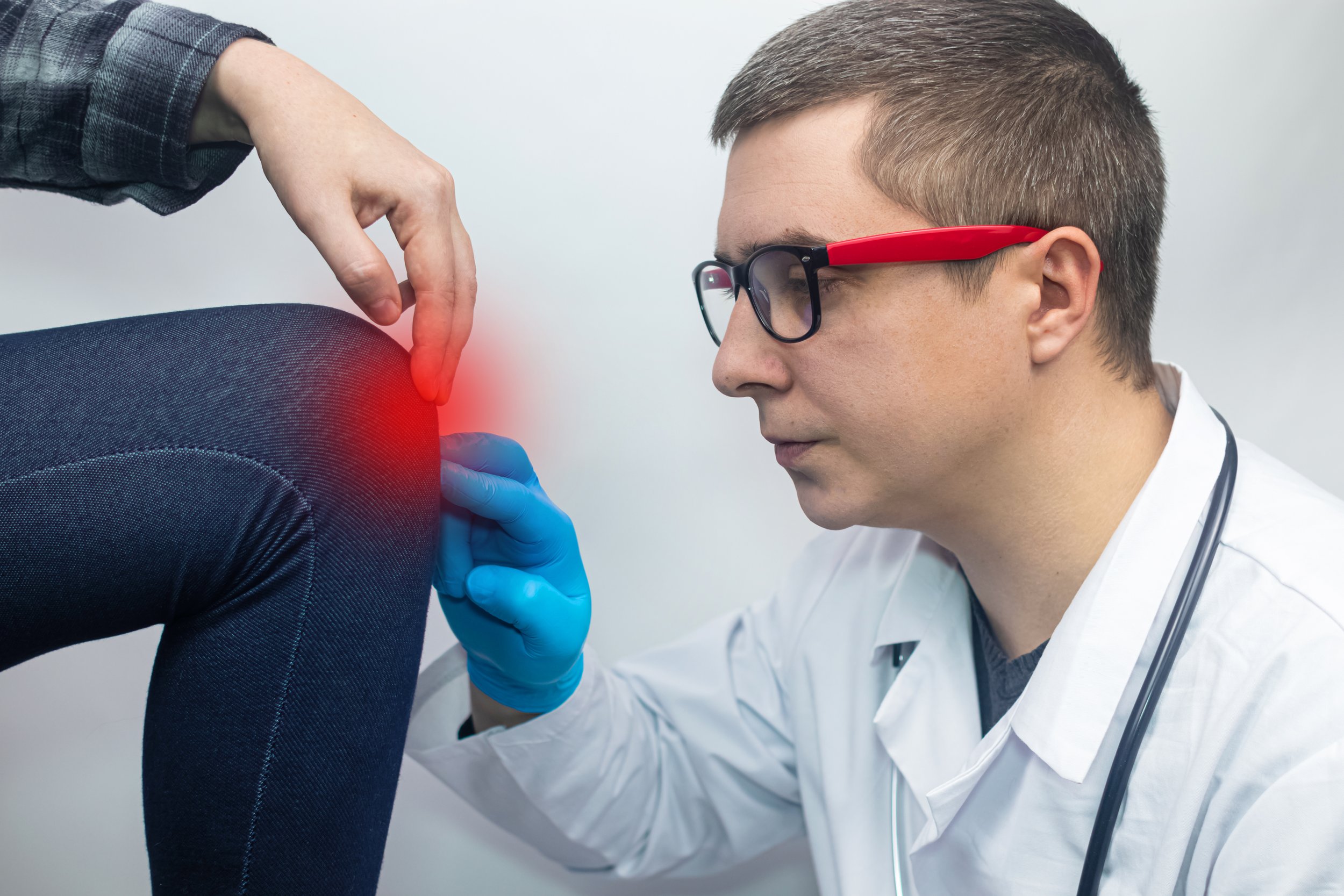A Screening Tool to Prevent Jumper’s Knee (Patellar Tendinopathy) Incidence
The Basics: What is Jumper’s Knee?
Patellar tendinopathy, commonly called Jumper’s Knee, is an overuse injury involving the patellar tendon (tendon from the bottom of the knee cap to the tibial tuberosity/bony landmark on your upper shin bone). The patellar tendon has various uses including increasing the quadriceps mechanical advantage and creating increased power at the quadriceps. Additionally, the patellar tendon is utilized for energy storage and release in activities such as jumping. Thus, the condition is associated with continuous and repetitive stress on the patellar tendon and is more prevalent in the athletic population with sports involving jumping including basketball and volleyball. The degenerative effects is typically responsible for nearly 1/3 of athletes missing >6 months of sport activity and 1/2 discontinuing sport participation.
What Population is Commonly Affected By Tendinopathy?
On average patellar tendinopathy was more prevalent in the sport-active population at 18.3% versus the general population of 0.1%. It occurs more often in males versus females, with current hypothesis leaning towards a protective effect via Estrogen levels. It occurs more often in non-elite level of activity versus elite, potentially due to elite athlete’s ability to build higher tendon load capacity from specificity of training. Elite athlete’s have continuous training sessions, competition, and sport specific planned progressive training that ensures the athlete and patellar tendon is able to withstand the demands of training and competition. Amateur athletes have less planned progressive training and subjected to more load spikes compared to elite athletes creating higher prevalence and incidence of patellar tendinopathy. Additionally, increased age and reduced tendon stiffness leads us to become more prone to patellar tendinopathy.
How Does Patellar Tendinopathy Present?
Patellar tendinopathy typically presents with anterior knee pain localized to below the knee cap. Typically able to point directly at area with 1-2 fingers (Differential diagnosis: Patellofemoral pain syndrome, infrapatellar bursitis, Osgood Schlatter’s, etc).
Increased swelling at tendon may be evident.
Increased tenderness to palpation below the knee, especially with full knee extension versus flexion (Bassett’s Sign)
Stage 1: Pain after activity
Stage 2: Pain during and after activity
Stage 3: Persistent pain (with or without activity)
Screening Tool:
Based on the current research and understanding, here is the proposed screening tool to improve predictive and preventative screening model:
Outcome Measures Utilized: VAS, VISA-P, Pain Provocation Test
Intrinsic Risk Factors
Gender (M>F)
Increased Age
Impaired Flexibility (Quadriceps and Hamstrings)
Reduced Quadriceps Femoris Strength
Leg Length Variance
Forefoot Pronation
Lower Patellar Pole
Body composition
Extrinsic Risk Factors
Hard, Physical Work Combined With Participation in Jumping Sport(s)
Physically Demanding Sport (Volleyball, Basketball, Soccer)
Physical Activity/Training Style
Jumping Sport
Level of Sport Participation (Amateur vs Elite)
Functional Assessment: Progression from single limb partial squat to max vertical jump/single leg 3-hop test
Treatment:
I’ll continue discussing patellar tendinopathy and basic treatment for various upper and lower extremity tendinopathies in future articles. Treatment should be individually created to ensure proper unloading of the tendon, reloading with proper stimulus and preventing future concern based on current stage, activity level, sport participation, etc. This will allow a more appropriate rehabilitation timeline and optimal success. Various progressive treatments will include Isometric exercise, Isotonic exercise with emphasis on eccentric training, heavy slow resistance exercise, speed and plyometric exercises then sport specific exercises until full recovery.
Summary: Patellar tendinopathy is the degeneration of the patellar tendon due to inappropriate loading and ability for tendon recovery. It causes severe consequences in various sports and professions, lasting for >6 months in 1/3 of cases and causing 1/2 to discontinue sport participation. The risk factors and population affected by patellar tendinopathy can help determine a screening tool to potentially identify at risk individuals in early to late stage patellar tendonitis, tendinopathy or asymptomatic tendon disruption. Although not as accurate as diagnostic testing with ultrasound, a cheap standard screening tool should be an initial measure to isolate at risk individuals to prevent and reduce incidence of patellar tendinopathy.
References
Cardoso TB, Pizzari T, Kinsella R, Hope D, Cook JL. Current trends in tendinopathy management. Best Pract Res Clin Rheumatol. 2019;33(1):122-140. doi:10.1016/j.berh.2019.02.001
Morgan S, Coetzee FF. Proposing a Patellar Tendinopathy Screening tool following a systematic review. S Afr J Physiother. 2018;74(1):454. Published 2018 Sep 26. doi:10.4102/sajp.v74i1.454
Nutarelli S, da Lodi CMT, Cook JL, Deabate L, Filardo G. Epidemiology of Patellar Tendinopathy in Athletes and the General Population: A Systematic Review and Meta-analysis. Orthop J Sports Med. 2023;11(6):23259671231173659. Published 2023 Jun 5. doi:10.1177/23259671231173659


